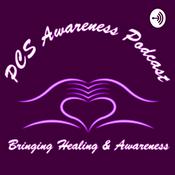222 episodes

Episode 216: BRUE (Brief Resolved Unexplained Event)
01/12/2025
We review BRUEs (Brief Resolved Unexplained Events). Hosts: Ellen Duncan, MD, PhD Noumi Chowdhury, MD https://media.blubrry.com/coreem/content.blubrry.com/coreem/BRUE.mp3 Download Leave a Comment Tags: Pediatrics Show Notes What is a BRUE? BRUE stands for Brief Resolved Unexplained Event. It typically affects infants <1 year of age and is characterized by a sudden, brief, and now resolved episode of one or more of the following: Cyanosis or pallor Irregular, absent, or decreased breathing Marked change in tone (hypertonia or hypotonia) Altered level of responsiveness Crucial Caveat: BRUE is a diagnosis of exclusion. If the history and physical exam reveal a specific cause (e.g., reflux, seizure, infection), it is not a BRUE. Risk Stratification: Low Risk vs. High Risk Risk stratification is the most important step in management. While only 6-15% of cases meet strict “Low Risk” criteria, identifying these patients allows us to avoid unnecessary invasive testing. Low Risk Criteria To be considered Low Risk, the infant must meet ALL of the following: Age: > 60 days old Gestational Age: GA > 32 weeks (and Post-Conceptional Age > 45 weeks) Frequency: This is the first episode Duration: Lasted < 1 minute Intervention: No CPR performed by a trained professional Clinical Picture: Reassuring history and physical exam Management for Low Risk: Generally do not require extensive testing or admission. Prioritize safety education/anticipatory guidance. Ensure strict return precautions and close outpatient follow-up (within 24 hours). High Risk Criteria Any infant not meeting the low-risk criteria is automatically High Risk. Additional red flags include: Suspicion of child abuse History of toxin exposure Family history of sudden cardiac death Abnormal physical exam findings (trauma, neuro deficits) Management for High Risk: Requires a more thorough evaluation. Often requires hospital admission. Note: Serious underlying conditions are identified in approx. 4% of high-risk infants. Differential Diagnosis: “THE MISFITS” Mnemonic T – Trauma (Accidental or Non-accidental/Abuse) H – Heart (Congenital heart disease, dysrhythmias) E – Endocrine M – Metabolic (Inborn errors of metabolism) I – Infection (Sepsis, meningitis, pertussis, RSV) S – Seizures F – Formula (Reflux, allergy, aspiration) I – Intestinal Catastrophes (Volvulus, intussusception) T – Toxins (Medications, home exposures) S – Sepsis (Systemic infection) Workup & Diagnostics Step 1: Stabilization ABCs (Airway, Breathing, Circulation) Point-of-care Glucose Cardiorespiratory monitoring Step 2: Diagnostic Testing (For High Risk/Symptomatic Patients) Labs: VBG, CBC, Electrolytes. Imaging: CXR: Evaluate for infection and cardiothymic silhouette. EKG: Evaluate for QT prolongation or dysrhythmias. Neuro: Consider Head CT/MRI and EEG if there are concerns for trauma or seizures. Clinical Pearl: Only ~6% of diagnostic tests contribute meaningfully to the diagnosis. Be judicious—avoid “shotgunning” tests in low-risk patients. Prognosis & Outcomes Recurrence: Approximately 10% (lower than historical ALTE rates of 10-25%). Mortality: < 1%. Nearly always linked to an identifiable cause (abuse, metabolic disorder, severe infection). BRUE vs. SIDS: These are not the same. BRUE: Peaks < 2 months; occurs mostly during the day. SIDS: Peaks 2–4 months; occurs mostly midnight to 6:00 AM. Take-Home Points Diagnosis of Exclusion: You cannot call it a BRUE until you have ruled out obvious causes via history and physical. Strict Criteria: Stick strictly to the Low Risk criteria guidelines. If they miss even one (e.g., age < 60 days), they are High Risk. Education: For low-risk families, the most valuable intervention is reassurance, education, and arranging close follow-up. Systematic Approach: For high-risk infants, use a structured approach (like THE MISFITS) to ensure you don’t miss rare but reversible causes. Read More

Episode 215: Marburg Virus and Global EM
01/11/2025
Lessons from Rwanda’s Marburg Virus Outbreak and Building Resilient Systems in Global EM. Hosts: Tsion Firew, MD Brian Gilberti, MD https://media.blubrry.com/coreem/content.blubrry.com/coreem/Marburg_Virus.mp3 Download Leave a Comment Tags: Global Health, Infectious Diseases Show Notes Context and the Rwanda Marburg Experience The Threat: Marburg Virus Disease is from the same family as Ebola and has historically had a reported fatality rate as high as 90%. The Outbreak (Sept. 2024): Rwanda declared an MVD outbreak. The initial cases involved a miner, his pregnant wife (who fell ill and died after having a baby), and the baby (who also died). Healthcare Worker Impact: The wife was treated at an epicenter hospital. Eight HCWs were exposed to a nurse who was coding in the ICU; all eight developed symptoms, tested positive within a week, and four of them died. The Turning Point: The outbreak happened in city referral hospitals where advanced medical interventions (dialysis, mechanical ventilation) were available. Rapid Therapeutics Access: Within 10 days of identifying Marburg, novel therapies (experimental drugs and monoclonal antibodies) and an experimental vaccine were made available through diplomacy with the US government/CDC and agencies like WHO, Africa CDC, CEPI and more. The Outcome: This coordinated effort—combining therapeutics, widespread testing, and years of investment in a resilient healthcare system—helped curb the fatality rate down to 23%. Barriers and Enablers in Outbreak Preparedness Fragmented Systems: Emergency and surveillance functions often operate in silos, leading to delayed or missed outbreak identification (e.g., inconsistent travel screening at JFK during early COVID-19 vs. African countries). Solution: Empowering Emergency Departments and the community as the sentinel site can bridge this gap. Limited Frontline Capacity and Protection: Clinicians are often undertrained and underprotected and are frequently not part of the decision-making for surveillance. Weak Governance and Accountability: Unclear command structures and lack of feedback discourage early reporting. Enabler: Strong governance and accountability in Rwanda helped contain the virus. Dependence on External Programs: Many low-income countries rely on outside sources for vaccines and therapeutics, slowing response. Solution: Invest in local production (e.g., Rwanda’s pre-outbreak investment in developing its own mRNA vaccines). Lack of Resource-Smart Innovation: Gaps exist in things like integrating digital triage tools and surveillance systems. Four Pillars of a Responsive and Equitable Emergency System Workforce: Invest in pre-service and in-service training, mentorship, and fair compensation to ensure a skilled, protected, and motivated team. Integration into the Health System: Emergency care (including pre-hospital services) must not operate in silos; it needs to be embedded in national health strategies and linked to surveillance, referral, and financing systems. Equity in Design and Policy: The system must address the needs and protection of vulnerable groups and work closely with policymakers. Data: Utilize real-time data and dashboards to provide a feedback loop between clinicians and policymakers, enabling tailored and innovative interventions. Advice for Clinicians in Global Health Work Start Small and Build Trust: Meaningful work requires humility and relationship over scale or visibility. Focus on local priorities and sustainable change through long-term partnership, not just presence. Avoid the “savior mindset”. Be T-Shaped: Be deep in one specialty (e.g., EM) but fluent across other critical areas like policy, finance, and data, as these drive decision-making. Focus on Knowledge Transfer: True impact means making yourself less essential over time. Prioritize mentorship, co-creation, and sharing leadership opportunities. Looking Ahead: Global Threats Shaping the Next Decade The future of EM will be shaped by the convergence of several complex challenges: Climate and Environmental Crisis: Extreme heat, floods, and vector-borne illnesses will strain emergency systems. Preparation: Invest in climate-resilient infrastructure for both EDs and the community. Outbreaks and Biosecurity: Future outbreaks will emerge faster than current systems can handle, coupled with challenges from anti-microbial resistance. Conflict, Displacement, and Urbanization: Mass migration and overcrowded cities will require new models of emergency care that are mobile, scalable, and inclusive. Preparation: Building resilient healthcare systems ready for crisis mental health and cross-border coordination. Digital Tools and AI: These can augment solutions, but investment is needed in data governance and ethical AI that preserves local control and adapts to local capacity. Read More

Episode 214: Acute Pulmonary Embolism
02/10/2025
We review the diagnosis, risk stratification, & management of acute pulmonary embolism in the ED. Hosts: Vivian Chiu, MD Brian Gilberti, MD https://media.blubrry.com/coreem/content.blubrry.com/coreem/Acute_Pulmonary_Embolism.mp3 Download One Comment Tags: Pulmonary Show Notes Core Concepts and Initial Approach Definition: Obstruction of pulmonary arteries, usually from a DVT in the proximal lower extremity veins (iliac/femoral), but may be tumor, air, or fat emboli. Incidence & Mortality: 300,000–370,000 cases/year in the USA, with 60,000–100,000 deaths annually. Mantra: “Don’t anchor on the obvious. Always risk stratify and resuscitate with precision.” Risk Factors: Broad, including older age, inherited thrombophilias, malignancy, recent surgery/trauma, travel, smoking, hormonal use, and pregnancy. Clinical Presentation and Risk Stratification Presentation: Highly variable, showing up as anything from subtle shortness of breath to collapse. Acute/Subacute: Dyspnea (most common), pleuritic chest pain, cough, hemoptysis, and syncope. Patients are likely tachycardic, tachypneic, hypoxemic on room air, and may have a low-grade fever. Chronic: Can mimic acute symptoms or be totally asymptomatic. Pulmonary Infarction Signs: Pleuritic pain, hemoptysis, and an effusion. High-Risk Red Flags: Signs of hypotension (systolic blood pressure < 90 mmHg for over 15 minutes), requirement of vasopressors, or signs of shock → activate PERT team immediately. Crucial Mimics: Think broadly; consider pneumonia, ACS, pneumothorax, heart failure exacerbation, and aortic dissection. Workup & Diagnostics History/Scoring: Ask about prior clots, recent surgeries, hospitalizations, travel. Use Wells/PERC criteria to assess pretest probability. Labs: D-dimer: A good test to rule out PE in a patient with low probability. If suspicion is high, proceed directly to imaging. Troponin/BNP: Act as RV stress gauges. Elevated levels are associated with increased risk of a complicated clinical course (25-40%). Lactate: Helpful in identifying patients in possible cardiogenic shock. EKG: Most common finding is sinus tachycardia. Classic RV strain patterns (S1Q3T3, T-wave changes/inversions) are nonspecific. Imaging: CXR: Usually normal, but quick and essential to rule out other causes. CTPA: The usual standard and gold standard for stable patients. High sensitivity (> 95%) and can detect RV enlargement/strain. V/Q Scan: Option for patients with contraindications to contrast (e.g., severe contrast allergies). POCUS (Point-of-Care Ultrasound): Useful adjunct for unstable patients. Bedside Echo: Can show signs of RV strain (enlarged RV, McConnell sign). Lower Extremity Ultrasound: Can identify a DVT in proximal leg veins. Treatment & Management Resuscitation (Reviving the RV): Oxygenation: Give supplementally as needed (nasal cannula, non-rebreather, high flow). Intubation: Avoid if possible; positive pressure ventilation can worsen RV dysfunction. Fluids: Be judicious; even the smallest amount can worsen RV overload. Vasopressors: Norepinephrine is preferred as first-line for hypotension/shock. Anticoagulation (Start Immediately): Initial choice is UFH or LMWH (Lovenox). Lovenox is preferred for quicker time to therapeutic range, but is contraindicated in renal dysfunction, older age, or need for emergent procedures. DOACs can be considered for stable, low-risk patients as an outpatient. Escalation for High-Risk PE Systemic Thrombolytics: Consider for very sick patients with shock/cardiac arrest (e.g., Alteplase 100 mg over two hours or a bolus in cardiac arrest). High risk of intracranial hemorrhage; weigh risks versus benefits. PERT Activation: Engage multidisciplinary teams (usually including ICU, CT surgery, and interventional radiology). Interventions: Consult specialists for catheter-directed thrombolysis or suction embolectomy. Surgical embolectomy can also be considered. Bridge to Care: Activate the ECMO team early for unstable patients to buy valuable time. Prognosis & Disposition Mortality: Low risk < 1%; intermediate 3-15%; high risk 25-65%. Complications: 3-4% of patients develop Chronic Thromboembolic Pulmonary Hypertension (CTEPH). Others may have long-term RV dysfunction and chronic shortness of breath. Recurrence: ∼ 30% chance in the next few weeks to months, if not treated correctly. Disposition: ICU: All high-risk and some intermediate-high risk patients. Regular Floor: Intermediate-low risk patients. Outpatient Discharge: Low-risk patients can be sent home on anticoagulation. Use PSI or HESTIA scores to risk stratify suitability, typically starting a DOAC. Shared Decision-Making: Critical to ensure care is safe and consistent with the patient’s wishes. Read More

Episode 213: Pneumothorax
01/9/2025
We break down pneumothorax: risks, diagnosis, and management pearls. Hosts: Christopher Pham, MD Brian Gilberti, MD https://media.blubrry.com/coreem/content.blubrry.com/coreem/Pneumothorax.mp3 Download Leave a Comment Tags: Chest Trauma, Pulmonary, Trauma Show Notes Risk Factors for Pneumothorax Secondary pneumothorax Trauma: rib fractures, blunt chest trauma (as in the case). Iatrogenic: central line placement, thoracentesis, pleural procedures. Primary spontaneous pneumothorax Young, tall, thin males (10–30 years). Connective tissue disorders: Marfan, Ehlers-Danlos. Underlying lung disease: COPD with bullae, interstitial lung disease, CF, TB, malignancy. Technically, anyone is at risk. Symptoms & Differential Diagnosis Typical PTX presentation: Dyspnea, chest pain, pleuritic discomfort. Exam clues: unilateral decreased breath sounds, focal tenderness/crepitus. Red flags (suggest tension PTX): JVD Tracheal deviation Hypotension, shock physiology Severe tachycardia, hypoxia Differential diagnoses: Pulmonary: asthma, COPD, pneumonia, pulmonary edema (SCAPE), ILD, infections. Cardiac: ACS, CHF, pericarditis. PE and other acute causes of dyspnea. Diagnostics Bloodwork: limited role, except type & screen if intervention likely. EKG: reasonable given chest pain/shortness of breath. Imaging: POCUS (bedside ultrasound) High sensitivity (86–96%) & specificity (97–100%). Signs: Seashore sign: normal lung sliding. Barcode sign: absent lung sliding. Lung point: most specific for PTX. CXR Sensitivity ~70–90% for small PTX. May show pleural line, hyperlucency. CT chest (gold standard) Defines size/severity. Rules out mimics (bullae, pleural effusion, hemothorax). Guides intervention choice. Management First step for all: Oxygen supplementation (non-rebreather if possible). Accelerates resorption of pleural air. Stable vs. unstable decision point: Unstable/tension PTX Immediate needle thoracostomy (14-g angiocath, 2nd ICS midclavicular). Temporizing until chest tube/pigtail placed. Stable, small PTX (<2 cm on O₂) Observation, supplemental O₂, conservative management. Stable, larger PTX or symptomatic Chest tube or pigtail catheter insertion. Pigtail catheters: less invasive, more comfortable, similar efficacy for simple PTX. Large bore tubes: indicated if associated with blood, pus, large collections. Disposition Admit all patients with chest tubes; cannot be discharged with tube in place. Service responsible varies by hospital: trauma, CT surgery, MICU, etc. Level of care (ICU vs. floor) depends on stability: ICU if unstable course, intubated, shock physiology. Stepdown/floor if stable and straightforward. Take Home Points Always broaden differential in dyspnea/chest pain → don’t anchor on asthma/COPD. Exam findings + history (trauma, risk factors) crucial to raising suspicion. Ultrasound is more sensitive than CXR and highly specific when lung point found. Oxygen is first-line; intervention determined by size + stability. Pigtail catheters increasingly favored for simple, stable PTX. All patients with intervention require admission; service varies by institution. Read More

Episode 212: Angioedema
02/8/2025
Angioedema – Recognition and Management in the ED Hosts: Maria Mulligan-Buckmiller, MD Brian Gilberti, MD https://media.blubrry.com/coreem/content.blubrry.com/coreem/Angioedema.mp3 Download Leave a Comment Tags: Airway Show Notes Definition & Pathophysiology Angioedema = localized swelling of mucous membranes and subcutaneous tissues due to increased vascular permeability. Triggers increased vascular permeability → fluid shifts into tissues. Etiologies Histamine-mediated (anaphylaxis) Associated with urticaria/hives, pruritus, and redness. Triggered by allergens (foods, insect stings, medications). Rapid onset (minutes to hours). Bradykinin-mediated Hereditary angioedema (HAE): C1 esterase inhibitor deficiency (autosomal dominant). Acquired angioedema: Associated with B-cell lymphoma, autoimmune disease, MGUS. Medication-induced: Most commonly ACE inhibitors; rarely ARBs. Typically lacks urticaria and itching. Gradual onset, can last days if untreated. Idiopathic angioedema Unknown cause; diagnosis of exclusion. Clinical Presentations Swelling Asymmetric, non-pitting, usually non-painful. May involve lips, tongue, face, extremities, GI tract. Respiratory compromise Upper airway swelling → stridor, dyspnea, sensation of throat closure. Airway obstruction is the most feared complication. Abdominal manifestations Bowel wall angioedema can mimic acute abdomen: Nausea, vomiting, diarrhea, severe pain, increased intra-abdominal pressure, possible ischemia. Key Differentiating Features Histamine-mediated: rapid onset, hives/itching, resolves quickly with epinephrine, antihistamines, and steroids. Bradykinin-mediated: slower onset, lacks urticaria, prolonged duration, less responsive to standard anaphylaxis medications. Diagnostic Approach in the ED Focus on airway (ABCs) and clinical assessment. Labs (e.g., C4 level) useful for downstream diagnosis (esp. HAE) but not for acute management. Imaging: only if symptoms suggest abdominal involvement or to rule out other causes. Treatment Strategies Airway protection is always priority: Early consideration of intubation if worsening obstruction or inability to manage secretions. Histamine-mediated (anaphylaxis): Epinephrine (IM), antihistamines, corticosteroids. Bradykinin-mediated: Epinephrine may be tried if unclear etiology (no significant harm, lifesaving if histamine-mediated). Targeted therapies: Icatibant: bradykinin receptor antagonist. Ecallantide: kallikrein inhibitor (less available). C1 esterase inhibitor concentrate: replenishes deficient protein. Fresh frozen plasma (FFP): contains C1 esterase inhibitor. Tranexamic acid (TXA): off-label, less evidence, considered if no other options. Complications to Watch For Airway compromise: rapid deterioration possible. Abdominal compartment syndrome from bowel edema (rare, surgical emergency). Take-Home Points Secure the airway if in doubt. Differentiate histamine-mediated vs bradykinin-mediated by presence/absence of hives/itching and speed of onset. Use epinephrine promptly if suspecting histamine-mediated angioedema or if uncertain. Consider bradykinin-targeted therapies for confirmed hereditary, acquired, or ACE-inhibitor–related angioedema. Recognize ACE inhibitors as the most frequent medication trigger; ARBs rarely cause it. Labs and imaging generally don’t change initial ED management but aid diagnosis for follow-up care. Read More
More Health & Wellness podcasts
Trending Health & Wellness podcasts
About Core EM - Emergency Medicine Podcast
Listen to Core EM - Emergency Medicine Podcast, The Peter Attia Drive and many other podcasts from around the world with the radio.net app

Get the free radio.net app
- Stations and podcasts to bookmark
- Stream via Wi-Fi or Bluetooth
- Supports Carplay & Android Auto
- Many other app features
Get the free radio.net app
- Stations and podcasts to bookmark
- Stream via Wi-Fi or Bluetooth
- Supports Carplay & Android Auto
- Many other app features


Core EM - Emergency Medicine Podcast
download the app,
start listening.






































